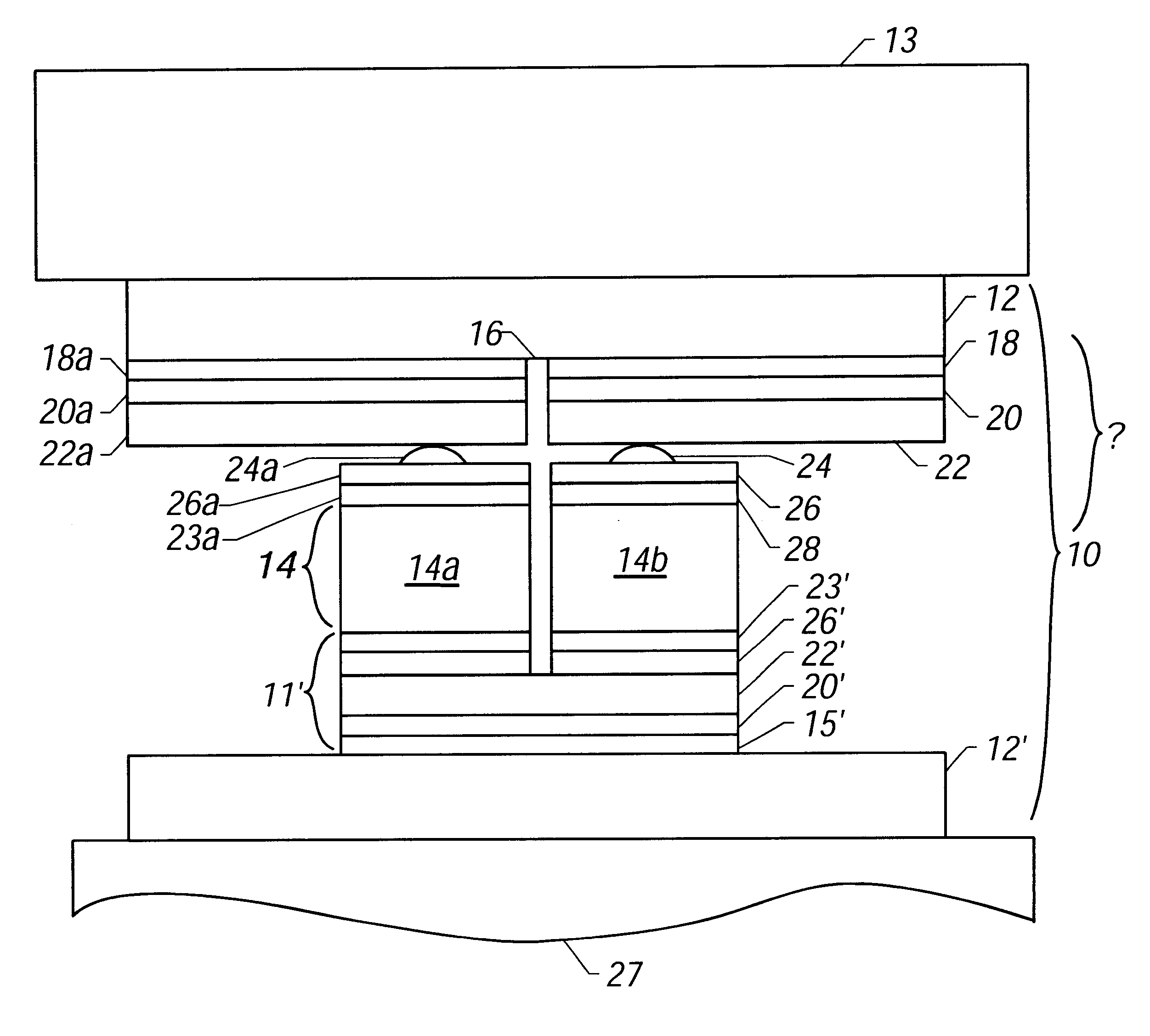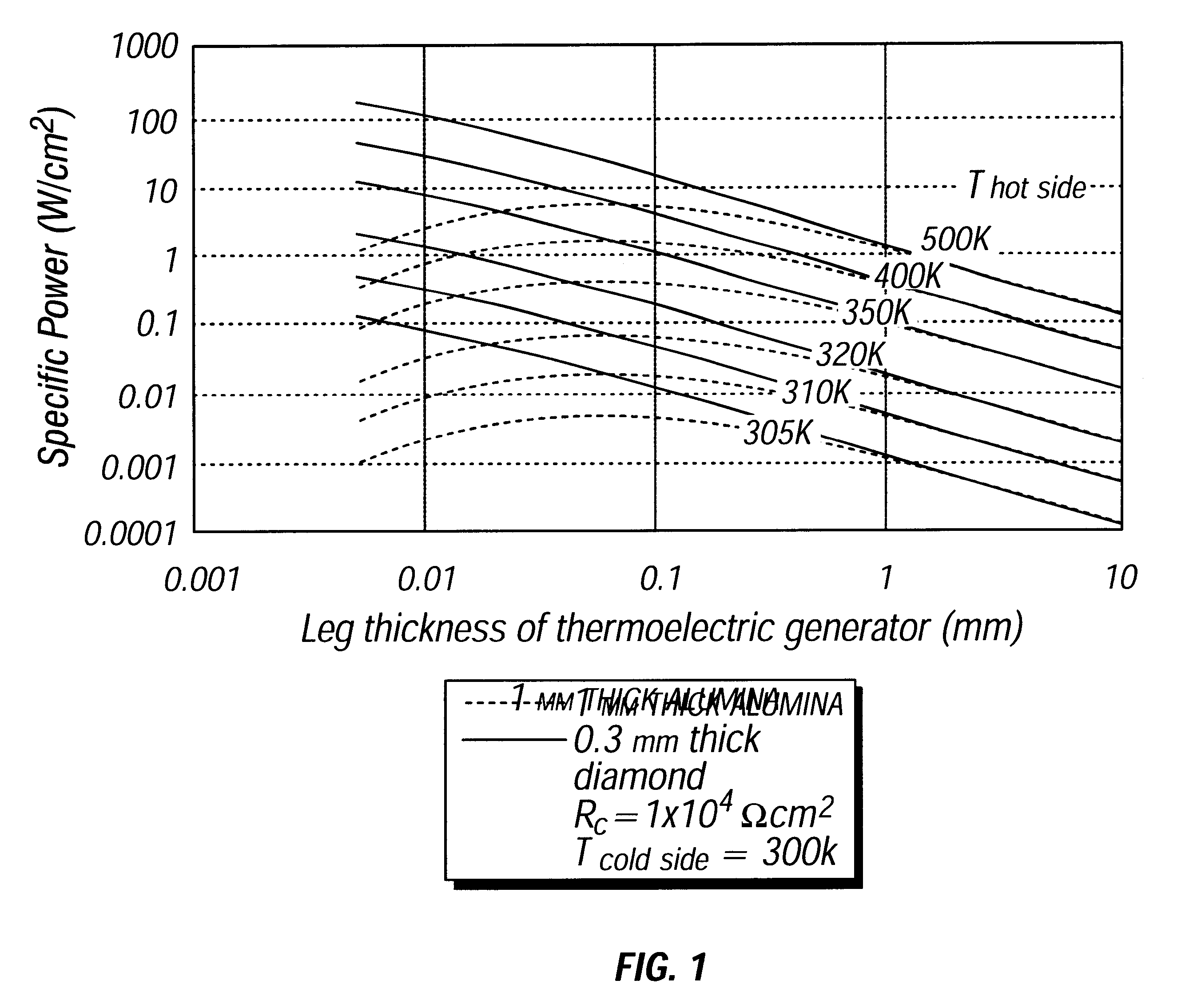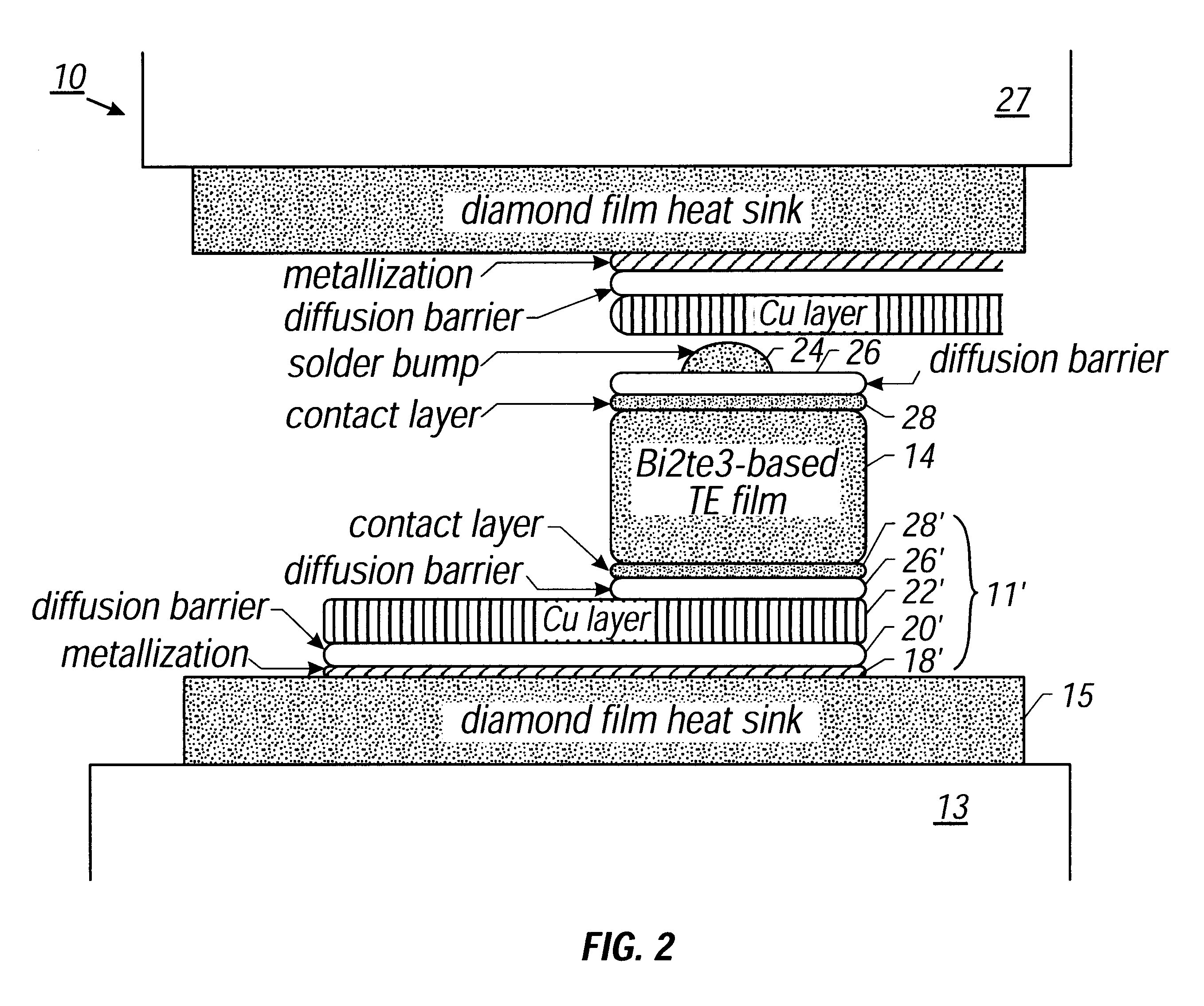Electronic device featuring thermoelectric power generation
a technology of electronic devices and generators, applied in the manufacture/treatment of thermoelectric devices, thermoelectric devices, thermoelectric device details, etc., can solve the problems of insufficient sun or other light sources, low output, and inability to always be available, so as to reduce the probability of electrical shorting during operation.
- Summary
- Abstract
- Description
- Claims
- Application Information
AI Technical Summary
Benefits of technology
Problems solved by technology
Method used
Image
Examples
Embodiment Construction
wristwatch application is described below as an example. It should be noted that any electronic device with similar power requirements may be powered similarly, as long as a thermal gradient is present.
.DELTA.T may be as low as 1.degree. C. for a wristwatch application. This low .DELTA.T is assumed as an operating point due to uncertainty in the ambient environment and the efficiency of heat rejection. A desirable size for the TEG module may be in the range of about 1.5 mm.times.1.5 mm in such an application.
A basic heat collection area of 100 mm.sup.2 is considered (e.g., 10 mm.times.10 mm) for purposes of this discussion. Heat rejection occurs from the outer edge of the watch front, or face (the center is typically glass). Thus, it may be desirable for the TEG to be positioned around the circumference of the watch interior, drawing heat from the solid back, and rejecting heat to the periphery of the front side.
A thermal analysis of one potential watch configuration has been perfor...
PUM
| Property | Measurement | Unit |
|---|---|---|
| thicknesses | aaaaa | aaaaa |
| thickness | aaaaa | aaaaa |
| thickness | aaaaa | aaaaa |
Abstract
Description
Claims
Application Information
 Login to View More
Login to View More - R&D
- Intellectual Property
- Life Sciences
- Materials
- Tech Scout
- Unparalleled Data Quality
- Higher Quality Content
- 60% Fewer Hallucinations
Browse by: Latest US Patents, China's latest patents, Technical Efficacy Thesaurus, Application Domain, Technology Topic, Popular Technical Reports.
© 2025 PatSnap. All rights reserved.Legal|Privacy policy|Modern Slavery Act Transparency Statement|Sitemap|About US| Contact US: help@patsnap.com



